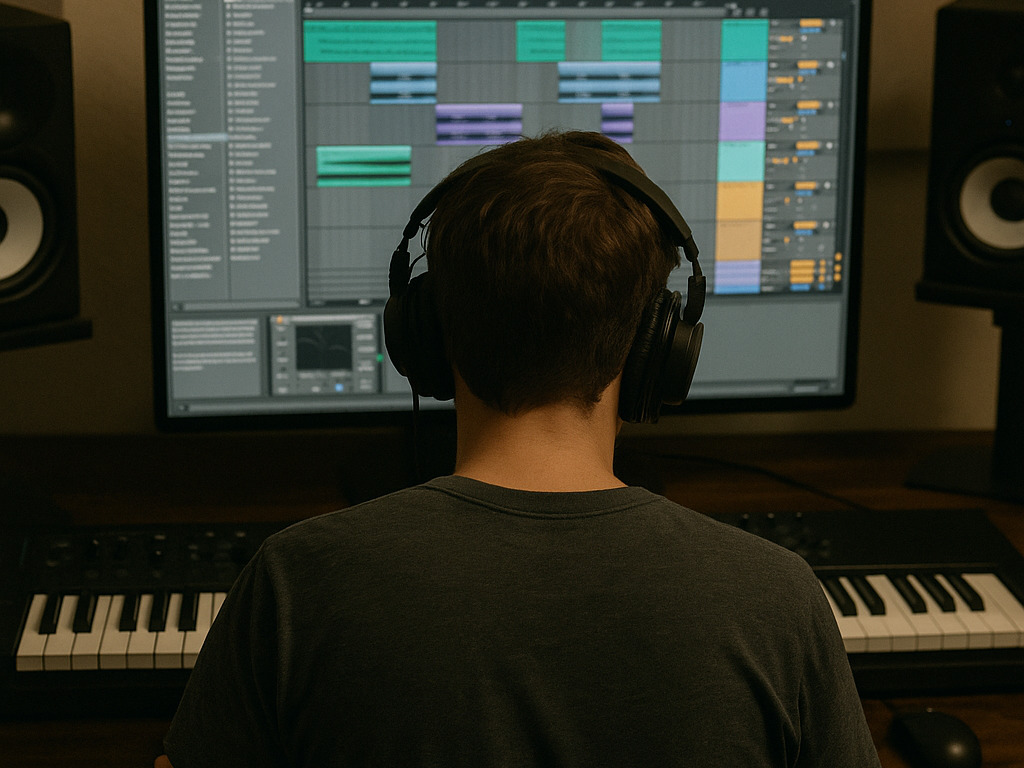Behind the Tracks: The Art of Arranging for Broadway
By Broadwaytrax Content Studio · October 19, 2025
Updated October 22, 2025
A script arrives. A piano-vocal score sits on the stand. The room is quiet until someone asks, "What does this story sound like on stage?" This question sparks the process of arranging music for Broadway.
Arrangers and orchestrators transform a simple score into a rich sound landscape. They decide which instruments sing the melody, how harmonies interact, and when to tone down the music for dialogue. This work is crucial to storytelling, and it is honored with a Tony Award for Best Orchestrations, helping everyone see the importance of orchestrators in theater (Tony Award for Best Orchestrations). To learn more about what orchestrators do, check out this article on (Playbill).
At Broadwaytrax, our journey begins with gathering details. We review the script and score, noting key changes, cuts, and elements like dance moments or scene transitions.
Next, we establish a style palette. We listen to example tracks to match the story's time and place. For instance, a Golden Age comedy will sound different from a hip-hop show. In the past, Broadway often used big orchestras, while today, many shows work with smaller bands and smart combinations to save space and budget. We make sure the sound remains full and clear (The Sound of Broadway Music).
Choosing Keys and Ranges
Choosing the right key can lift a character's spirit or create tenderness. We test different keys and assess how they fit the singer's voice. We ensure the singer matches the story's feelings while following rules from rights holders.
Then, we map the song's structure. We mark starting and stopping points, creating spaces for singers to breathe. This map becomes the foundation of the track.
Building the Sound
We use various tools to shape the music. Changing harmonies can affect the mood. A simple chord can create tension. Clear voicings help the lyrics shine. We also consider the groove—whether it feels straight, swung, Latin, or rock. The drum setup varies; it could be live on a kit or partly in the track itself. Every choice reflects the story and the desired feeling. Modern productions often mix live and electronic sounds while ensuring everyone stays in sync (Hamilton feature, Sound On Sound).
Keyboard programming is one of our key assets. A well-planned patch list can blend various sounds, from strings to brass to soft electronic tones, all from one device. This approach helps small bands deliver a full sound while being practical (KeyboardTEK).
Tempo Matters

Getting the tempo right is crucial. Dance numbers often need a click track to stay on beat, but music must still flow naturally. We create a tempo curve that rises and falls with the music. We also include cues for the music director when needed.
A Case Study
Here's a quick example from our work. We had to adapt a fast-paced Golden Age piece for seven players and tracks while adding a dance extension. We kept the lively brass sound by spreading some parts across reeds and keys. We programmed brass layers and used slight breath effects for realism. The guitar was set to a buoyant style to maintain groove. The drum parts were adjusted for clearer kicks. We selected a slightly higher key to enhance the lead singer's performance. Our tempo map included lifts for the dance break for added energy, along with two safety vamps. Our final delivery included various mixes to help the music director manage the sound in the room and run efficient rehearsals.
Final Checks
When delivering tracks, minor details make a big difference. Clear labeling, matching start times, and consistent volume levels help everyone work more efficiently. We also provide count-ins and markers for ease of use. These practices originate from studio work and work well in theater (GRAMMY P&E Wing).
Once the tracks are on stage, collaboration continues. A director may request an extra two bars for a scene shift, or the music needs to lower for a joke to land. We make quick adjustments to keep rehearsals and production schedules moving.
Who Works on Our Builds?
Before a track goes live, many hands are involved. The arranger and orchestrator create the blueprint. The programmer designs sound. The music editor and mix engineer fine-tune everything. Additionally, a music director checks vocal support and timing before we finalize and deliver.
Getting Started with Us
Need a custom arrangement for performances?
Request Custom TracksWhat do you need to start a project with us? Please send your script and score, as well as target keys and any planned cuts. Don’t forget dance notes, camps, cues and other unique aspects that might impact timing. If you need flexible tracks for different venues, let us know, as many companies now look for adaptable arrangements. You can also build a quote for any show using our (online custom quote tool).
Arranging is both detailed work and creative play. It focuses on one question: "What serves the story best?" When the choices are right, everyone—singers, dancers, and audiences—can connect with the music. That's the art of arranging tracks, and it’s what we love most about our work ((Playbill), (The Sound of Broadway Music)).